About IVS
IVS 2024 Directing Board Elections
Candidates for Representative Positions
This page provides information about the candidates for representative positions
on the IVS Directing Board. Within each category candidates are listed alphabetically
by their family names. The Representatives will be elected by the Associate Members.
Candidates for Networks Representative
Susana García-Espada
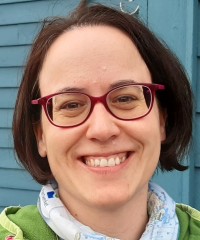 Susana García-Espada is VLBI Operations Engineer working for Karverket (Norwegian
Mapping Authority) at Ny-Alesund Observatory since May 2020. Her main task is to start
the VLBI operations of the VGOS twin telescopes at the new observatory together
with the operation and maintenance of the VLBI 20-m radio telescope, GNSS, gravimeters,
seismographs and all auxiliary systems. She has worked in Ny-Alesund from 2013-2014.
Susana has worked before for the RAEGE (Atlantic Network of Geodynamic and Space
Stations) project as VLBI Engineer at Santa Maria station, Azores, Portugal. Her
main task was to start Santa Maria station operations. She has been involved in
VLBI operations since 2007 when she had a scholarship supervised by Paco Colomer
in the Spanish IGN (National Geographic Institute) working at Yebes Observatory.
She got a permanent position at Yebes Observatory in 2009. Her role was the
management and participation of geodetic and astronomical VLBI and e-VLBI sessions
with the 40-m radio telescope. She was student research visitor at Chalmers
University of Technology (Göteborg, Sweden) and Onsala Space Observatory (OSO),
supervised by Rüdiger Haas. She worked with VLBI data analysis and her main
interest was modeling the troposphere. She is the secretary of the European VLBI
Group for Geodesy and Astrometry (EVGA) since 2013.
Susana García-Espada is VLBI Operations Engineer working for Karverket (Norwegian
Mapping Authority) at Ny-Alesund Observatory since May 2020. Her main task is to start
the VLBI operations of the VGOS twin telescopes at the new observatory together
with the operation and maintenance of the VLBI 20-m radio telescope, GNSS, gravimeters,
seismographs and all auxiliary systems. She has worked in Ny-Alesund from 2013-2014.
Susana has worked before for the RAEGE (Atlantic Network of Geodynamic and Space
Stations) project as VLBI Engineer at Santa Maria station, Azores, Portugal. Her
main task was to start Santa Maria station operations. She has been involved in
VLBI operations since 2007 when she had a scholarship supervised by Paco Colomer
in the Spanish IGN (National Geographic Institute) working at Yebes Observatory.
She got a permanent position at Yebes Observatory in 2009. Her role was the
management and participation of geodetic and astronomical VLBI and e-VLBI sessions
with the 40-m radio telescope. She was student research visitor at Chalmers
University of Technology (Göteborg, Sweden) and Onsala Space Observatory (OSO),
supervised by Rüdiger Haas. She worked with VLBI data analysis and her main
interest was modeling the troposphere. She is the secretary of the European VLBI
Group for Geodesy and Astrometry (EVGA) since 2013.
Javier González-García
 Javier González-García obtained his B.Sc. in Telecommunications Engineering from
the Universidad Carlos III de Madrid in 2010 and his M.Sc. from the University of Alcalá
de Henares in 2020. He has been working at the Yebes Observatory since 2012, first as an intern
and since 2016 as an operations engineer. He has been involved in VLBI operations both for astronomy
and geodesy, first with the 40-m radio telescope and then with the Yebes 13.2-m VGOS radio telescope
(since 2016), being technically responsible for the VLBI backends and functioning as the operations
supervisor. Recently he has been involved in building the HPC to host a DiFX software correlator at
the Yebes Observatory, which he also operates. As part of the technical staff at Yebes Observatory,
he has participated in several European projects and regularly attends international VLBI technical
meetings.
Javier González-García obtained his B.Sc. in Telecommunications Engineering from
the Universidad Carlos III de Madrid in 2010 and his M.Sc. from the University of Alcalá
de Henares in 2020. He has been working at the Yebes Observatory since 2012, first as an intern
and since 2016 as an operations engineer. He has been involved in VLBI operations both for astronomy
and geodesy, first with the 40-m radio telescope and then with the Yebes 13.2-m VGOS radio telescope
(since 2016), being technically responsible for the VLBI backends and functioning as the operations
supervisor. Recently he has been involved in building the HPC to host a DiFX software correlator at
the Yebes Observatory, which he also operates. As part of the technical staff at Yebes Observatory,
he has participated in several European projects and regularly attends international VLBI technical
meetings.
Fengchun Shu
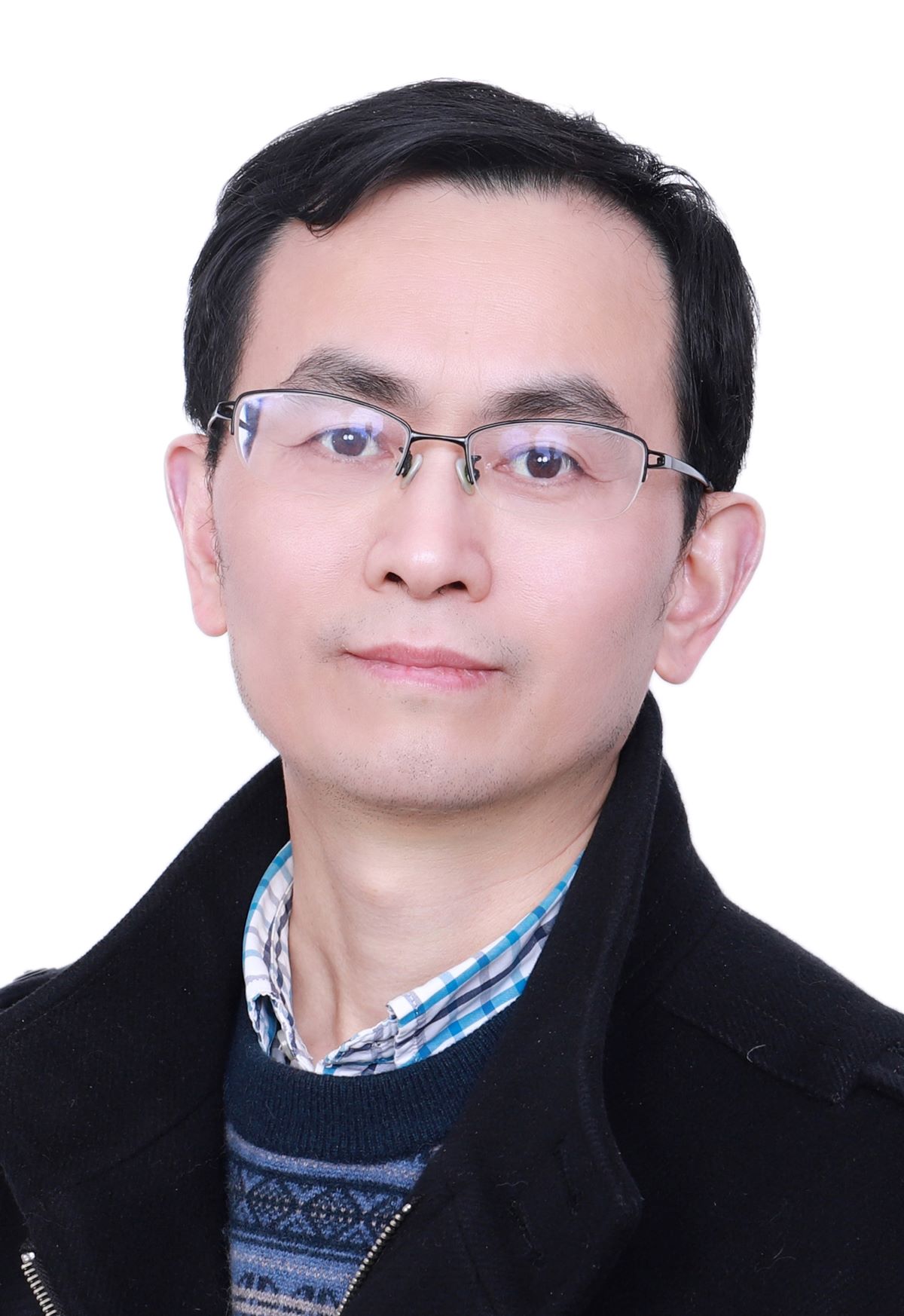 Fengchun Shu is a research scientist at SHAO. He developed a scheduling/modeling software tool
dedicated to real-time VLBI application for navigation of China's Lunar probes. He has been active
in the IVS since 2011. His activities included making Seshan25 available for IVT-INT-3 sessions,
pushing the Shanghai Correlator into IVS operations, and contributing to the foundation of AOV.
He has scheduled many AOV/APSG sessions since 2015, emphasizing high-sensitivity astrometry
of weak radio sources and precisely locating new stations. He led the Shanghai Correlator
operation team to correlate more than 210 IVS sessions, with frequent interaction with a lot
of international stations. He helped to develop a standard data processing pipeline for K-band
geodesy of the East Asian VLBI Network. He has been instrumental in preparing new VGOS stations
at Shanghai, Urumqi, and Chiang Mai for IVS observations. He has been the AOV Chair for the
past 5 years and is a current at-large member on the IVS Directing Board.
Fengchun Shu is a research scientist at SHAO. He developed a scheduling/modeling software tool
dedicated to real-time VLBI application for navigation of China's Lunar probes. He has been active
in the IVS since 2011. His activities included making Seshan25 available for IVT-INT-3 sessions,
pushing the Shanghai Correlator into IVS operations, and contributing to the foundation of AOV.
He has scheduled many AOV/APSG sessions since 2015, emphasizing high-sensitivity astrometry
of weak radio sources and precisely locating new stations. He led the Shanghai Correlator
operation team to correlate more than 210 IVS sessions, with frequent interaction with a lot
of international stations. He helped to develop a standard data processing pipeline for K-band
geodesy of the East Asian VLBI Network. He has been instrumental in preparing new VGOS stations
at Shanghai, Urumqi, and Chiang Mai for IVS observations. He has been the AOV Chair for the
past 5 years and is a current at-large member on the IVS Directing Board.
Nataliya Zubko
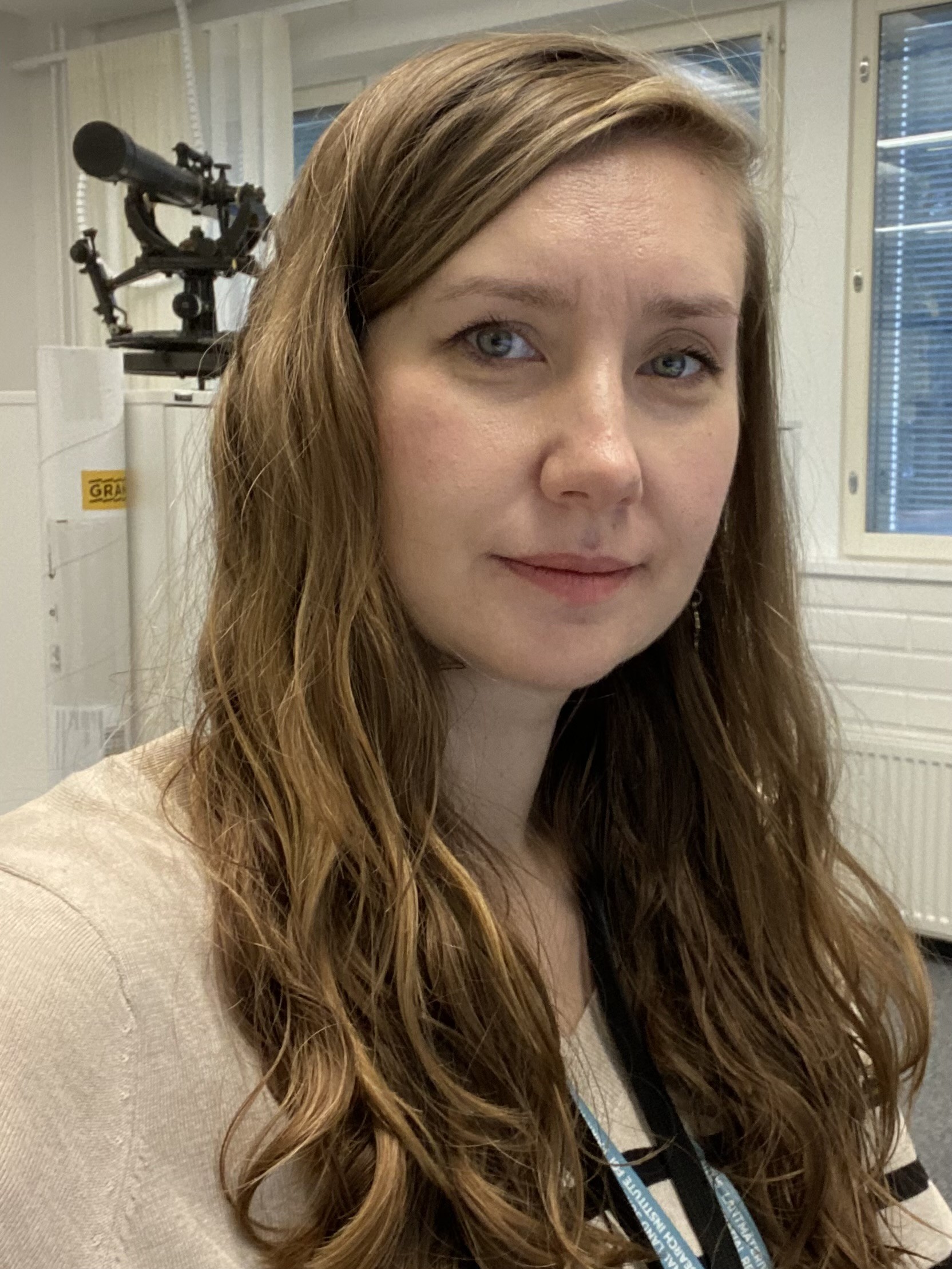 Nataliya Zubko obtained her PhD in Applied Physics from Hokkaido University, Japan, in 2009.
Since 2010, she has been a specialist researcher at the Finnish Geospatial Research Institute,
focusing on VLBI techniques. She has been involved in operating IVS sessions with the legacy
Aalto University radio telescope. After securing funding for a new VGOS telescope, she was
responsible for the construction of the new system at Metsähovi station. Nataliya Zubko has
actively contributed to various IVS activities, including organizing IVS General and EVGA
meetings and IVS training schools. Her research aims to enhance the performance of the new
VGOS system by addressing radio source structure issues and investigating VGOS systematic errors.
Nataliya Zubko obtained her PhD in Applied Physics from Hokkaido University, Japan, in 2009.
Since 2010, she has been a specialist researcher at the Finnish Geospatial Research Institute,
focusing on VLBI techniques. She has been involved in operating IVS sessions with the legacy
Aalto University radio telescope. After securing funding for a new VGOS telescope, she was
responsible for the construction of the new system at Metsähovi station. Nataliya Zubko has
actively contributed to various IVS activities, including organizing IVS General and EVGA
meetings and IVS training schools. Her research aims to enhance the performance of the new
VGOS system by addressing radio source structure issues and investigating VGOS systematic errors.
Candidates for Analysis and Data Centers Representative
Hana Krásná
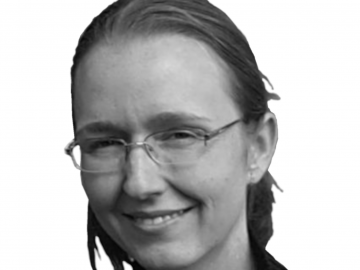 Hana Krásná received her PhD in Geodesy from the TU Wien, Austria, in 2013, with a thesis
on Estimation of solid Earth tidal parameters and free core nutation with VLBI. She has extensive
experience in VLBI data analysis, having been one of the main developers of the geodetic VLBI
analysis software package VieVS since its inception in 2008. Hana covers the areas of theoretical
modeling of the group delay, least-squares adjustment and combination of individual VLBI sessions
at the normal equation level to the global solution, and the construction of VLBI reference frames.
She is experienced in the analysis of legacy S/X data, VGOS measurements, and is also actively
exploring the potential of VLBI data at higher radio bands for geodesy and astrometry. Hana has
been an Associate Member of the IVS since 2008. In her current position as Assistant Professor
at the TU Wien and Head of the IVS Analysis Center in Vienna, she leads investigations on systematic
errors in reference frames and Earth orientation parameters, and is routinely involved in the
operational analysis of the IVS sessions.
Hana Krásná received her PhD in Geodesy from the TU Wien, Austria, in 2013, with a thesis
on Estimation of solid Earth tidal parameters and free core nutation with VLBI. She has extensive
experience in VLBI data analysis, having been one of the main developers of the geodetic VLBI
analysis software package VieVS since its inception in 2008. Hana covers the areas of theoretical
modeling of the group delay, least-squares adjustment and combination of individual VLBI sessions
at the normal equation level to the global solution, and the construction of VLBI reference frames.
She is experienced in the analysis of legacy S/X data, VGOS measurements, and is also actively
exploring the potential of VLBI data at higher radio bands for geodesy and astrometry. Hana has
been an Associate Member of the IVS since 2008. In her current position as Assistant Professor
at the TU Wien and Head of the IVS Analysis Center in Vienna, she leads investigations on systematic
errors in reference frames and Earth orientation parameters, and is routinely involved in the
operational analysis of the IVS sessions.
Matthias Schartner
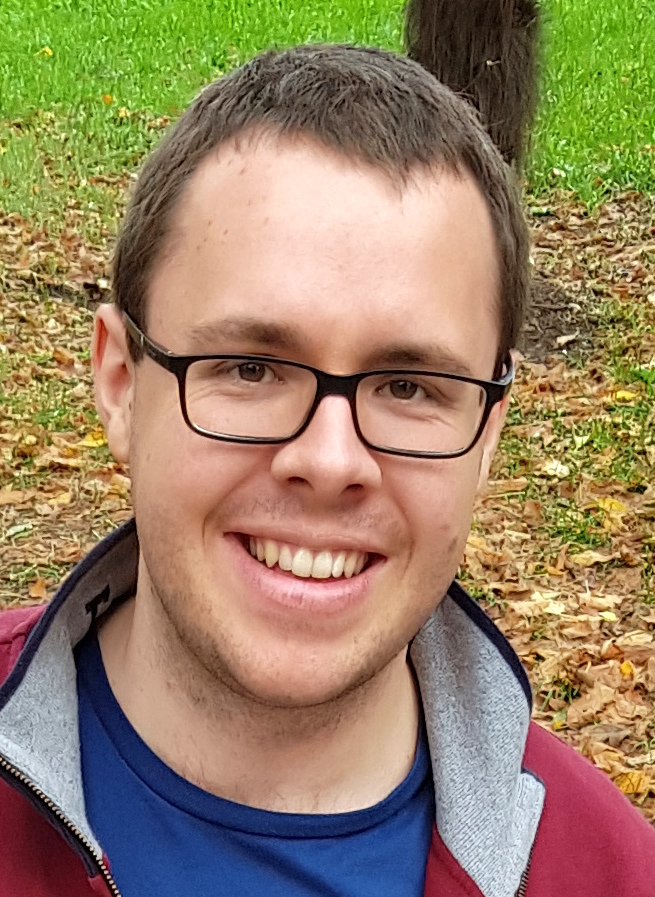 Matthias Schartner studied Geodesy and Geoinformation at TU Wien followed by a Ph.D. in
the field of higher geodesy. His Ph.D. thesis was on the topic of VLBI scheduling. During
his time in Vienna, he contributed to the Vienna VLBI and Satellite Software (VieVS) and
developed the new VLBI scheduling software VieSched++. He also generated several tutorial
videos and manuals for teaching VLBI to the next generation of scientists. After finishing
his Ph.D., he moved to ETH Zurich as a postdoctoral researcher. His current work is about
improving today's VLBI performance and automation. Currently, he is in charge of scheduling
several IVS S/X observing programs, including AUA, CRD, CRF, INT2, INT3, OHG, SI, T2, T2++,
as well as the VGOS observing programs VGYG, VGOSS, VGOSB, VGOSC, and the VGOS R&D sessions.
Together, this accumulates to around 400 IVS sessions per year. To handle this excessive
number of sessions, he has founded the IVS Operation Center DACH, a joint initiative between
ETH Zurich, BKG, and TU Wien. Furthermore, he is an active member of the VGOS Technical
Committee (VTC), the IVS Committee on Education and Training (CTE), and the EU-VGOS consortium
as well as being an active researcher in the field of geodetic VLBI and the first author of
several VLBI publications in high-quality journals.
Matthias Schartner studied Geodesy and Geoinformation at TU Wien followed by a Ph.D. in
the field of higher geodesy. His Ph.D. thesis was on the topic of VLBI scheduling. During
his time in Vienna, he contributed to the Vienna VLBI and Satellite Software (VieVS) and
developed the new VLBI scheduling software VieSched++. He also generated several tutorial
videos and manuals for teaching VLBI to the next generation of scientists. After finishing
his Ph.D., he moved to ETH Zurich as a postdoctoral researcher. His current work is about
improving today's VLBI performance and automation. Currently, he is in charge of scheduling
several IVS S/X observing programs, including AUA, CRD, CRF, INT2, INT3, OHG, SI, T2, T2++,
as well as the VGOS observing programs VGYG, VGOSS, VGOSB, VGOSC, and the VGOS R&D sessions.
Together, this accumulates to around 400 IVS sessions per year. To handle this excessive
number of sessions, he has founded the IVS Operation Center DACH, a joint initiative between
ETH Zurich, BKG, and TU Wien. Furthermore, he is an active member of the VGOS Technical
Committee (VTC), the IVS Committee on Education and Training (CTE), and the EU-VGOS consortium
as well as being an active researcher in the field of geodetic VLBI and the first author of
several VLBI publications in high-quality journals.
|